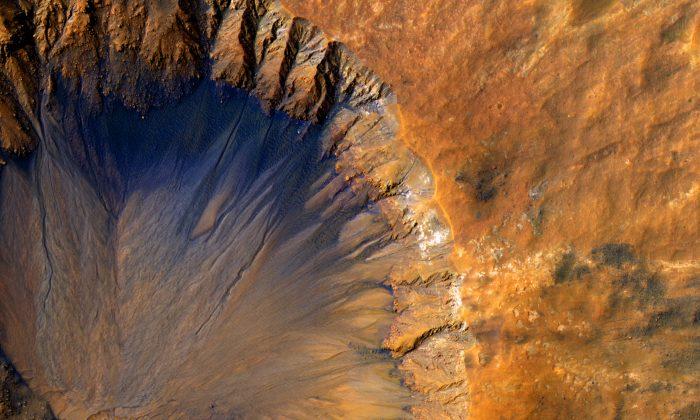For decades, science fictions writers have conjured up images of space colonies — whether on the moon, other planets in the solar system, or even in faraway galaxies — but for decades, they remained just that: science fiction.
Interest in space exploration had reached such a nadir in the early 2000s that Elon Musk considered spending $30 million dollars to buy rockets and launch them to Mars, for the sole purpose of reigniting public interest.
Now, it seems that interest in conquering outer space has never been higher. Mars One, a start-up in the Netherlands, has already started recruiting for the first settlers on a future Mars colony.
In 2010, Congress finally set the human exploration of Mars as one of NASA’s goals, giving the project essential financial backing. NASA has already began the construction of vast rockets that could take humans to the red planet. But getting there is only half the battle: for a Mars colony to exist, the planet needs to become hospitable to humans.
DARPA, the research wing of the Department of Defense, announced a major breakthrough in the Mars mission: They’re on track to create a synthetic organism that could terraform Mars’s surface, releasing certain types of gas into the atmosphere and making its climate closer to the one on Earth.
Mars’s atmosphere is almost entirely made up of carbon dioxide, lacking the abundance of nitrogen and oxygen found on Earth. A crucial step in terraformation is the deployment of bacteria and photosynthetic organism to adjust Mars’s atmospheric composition.
The chilly climate found across Mars — the average surface temperature is negative 55 degrees — poses a challenge for existing species of bacteria and algae, which are designed to survive on Earth, which has an average temperature of 61 degrees.
To make organisms resilient enough for the extreme Martian climate, their DNA has to be modified. DARPA has not disclosed the full details of its bioengineering techniques, but previous attempts could give a clue on how the process work.
Super Bacteria
For their submission in the 2012 International Genetically Engineered Machines competition, a team from Brown University made genetic modules which they call “Hell Cells,” which could be spliced onto bacteria to enable it to survive in extreme weather conditions, be it heat or cold.
The modules, which are isolated genetic material from other species, are drawn from a diversity of sources in nature, including the Siberian beetle and antifreeze proteins.
Ben Geilich, the captain of the 2012 iGem team at Brown, has welcomed the news of DARPA’s involvement in bacteria bioengineering.
“DARPA has so many incredible resources, such as funding, access to equipment for testing, and brilliant scientists that will help get this technology into practice faster,” Gelich wrote in an email. “I definitely think that engineered microorganisms are going to play an essential role in the future of space exploration and colonization.”
DARPA wants to create a library of genetic modules that engineers could look up and use to modify bacterium with a custom set of traits, whether it’s to terraform Mars, Venus, or any other kind of environment.
“We envisioned a toolkit of genetic resistance parts which could be mixed and matched for any particular environment,” Gelich said. “For example, the ‘Martian’ bacteria could receive the parts for low temperatures, desiccation, and ionizing radiation.”
Synthetic bacteria could have a wide range of uses beyond terraformation. Gelich said that bacteria could be used to “synthesizing fuel, building materials, or medicines.”
Its main advantage would be to keep costs down. It takes a vast amount of fuel to send a modicum of supplies to Mars, and Mars One estimates that sending just four people there would cost $6 billion dollars, so the more resources could be grown on the colony, the better.
Still, even for optimists, the task of transforming Mars into a second Earth stretches over a vast — even interminable — time horizon. The Mars Society estimates that it could take at least a millennium for large plant life to emerge on Mars, and Chris Mckay, a research at NASA’s Ames Research Center, says that 100,000 years could pass before Earth’s conditions could be duplicated on Mars.





